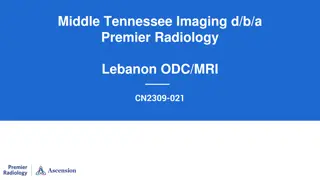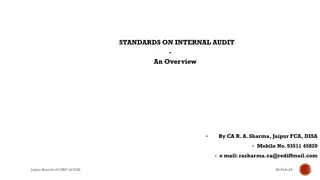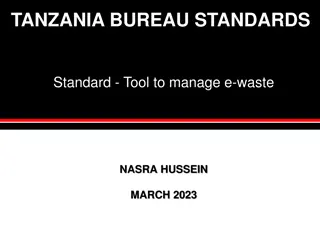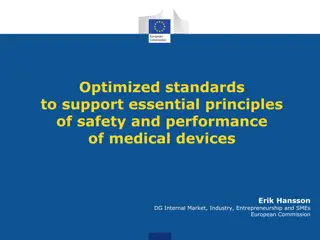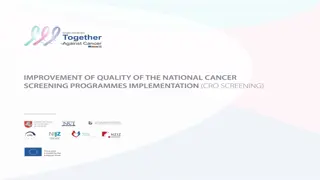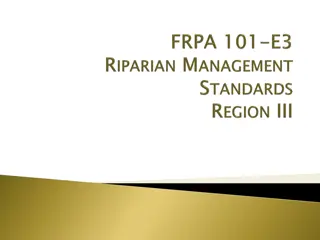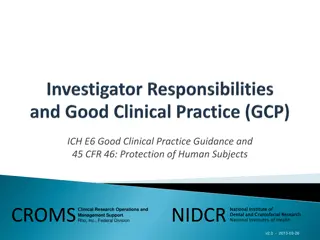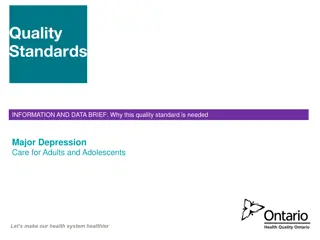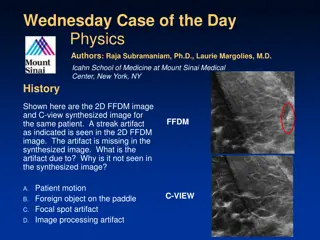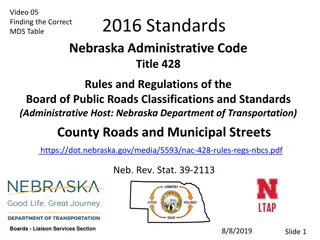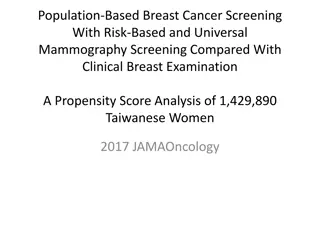US Mammography Quality Standards & Regulations Overview
Established in 1992, the US Mammography Quality Standards Act (MQSA) sets national standards for mammography services. Learn about accreditation, certification, and regulations governing mammography facilities in the US.
Download Presentation

Please find below an Image/Link to download the presentation.
The content on the website is provided AS IS for your information and personal use only. It may not be sold, licensed, or shared on other websites without obtaining consent from the author.If you encounter any issues during the download, it is possible that the publisher has removed the file from their server.
You are allowed to download the files provided on this website for personal or commercial use, subject to the condition that they are used lawfully. All files are the property of their respective owners.
The content on the website is provided AS IS for your information and personal use only. It may not be sold, licensed, or shared on other websites without obtaining consent from the author.
E N D
Presentation Transcript
The US Mammography Quality Standards Act (MQSA) Chapter 12 Olive Peart, MS,RT (R)(M) www.opeart.com
PURPOSE OF THE MAMMOGRAPHY QUALITY STANDARDS The US MQSA was enacted on October 27, 1992, to establish minimal national quality standards for mammography. FDA began enforcing MQSA with an inspection program in 1995. The FDA Web site publishes a standardized guidance system, which was developed to provide the public with clarifications or comments on the final regulations. The guidance system provides multiple paths a facility can follow to achieve compliance with the standards.
INTERIM REGULATION Interim regulations refer to the regulations entitled Requirements for Accrediting Bodies of Mammography Facilities, published by the FDA on December 21, 1993, and amended on September 30, 1994. These regulations established the standards that had to be met by mammography facilities to lawfully operate between October 1, 1994, and April 28, 1999.
FINAL REGULATIONS The final regulations were issued on October 28, 1997, and became effective on April 28, 1999. The final MQSA regulations are national quality standards for mammography services.
ACCREDITATION AND CERTIFICATION Before a facility can legally perform mammograms in the United States, it must first be accredited, then certified. Under the MQSA, to be accredited, the facility must contact one of the four accreditation bodies authorized under the FDA to accredit mammography facilities, conduct facility inspections, and enforce the MQSA standards. These are the American College of Radiology (ACR), the State of Arkansas, the State of Iowa, and the State of Texas.
STATE ACCREDITATION BODIES State accreditation bodies (SAB) can accredit only those facilities that are located in their respective states. State laws may also require facilities to have State accreditation or State certification.
RULES FOR ACCREDITATION Apply to an FDA-approved accreditation body Undergo periodic review of clinical images Have an annual survey by a medical physicist Meet federally developed quality standards
CERTIFICATION Certification is a process that is separate from accreditation. The FDA has established procedures for the application, approval, evaluation, and withdrawal of certification. Certification is administered by a Certifying Agency (FDA or an FDA-approved Certifying State). The FDA and the States as Certifiers (SAC) are the only organizations authorized to issue MQSA certification. The FDA-approved Certifying States are the State of Illinois, the State of Iowa the State of Illinois, the State of South Carolina, and the State of Texas.
PROVISIONAL CERTIFICATE A provisional certificate is generally valued for 6 months, although under certain instances the facility can qualify for a one-time 90-day extension of the provisional MQSA certificate. During these 6 months, the facility must collect clinical images and other data needed to complete the accreditation process.
QUALITY ASSURANCE REGULATIONS OF MQSA Under the MQSA, each facility must establish and maintain a quality assurance (QA) program and quality control (QC) program to ensure the safety, reliability, clarity, and accuracy of mammography services performed at the facility. February 2016, the FDA approved the ACR s new Digital Mammography Quality Control (QC) Manual and Digital Mammography QC Phantom as an alternative for all 2D digital mammography units.
QCSCREEN/FILM VERSUS DIGITAL Digital QC has manufacture specific quality control tests Digital also incorporates some or similar screen/film tests
CLINICAL IMAGES The clinical images in digital mammography can be submitted as hardcopy or digital and must be close the true image size, without magnification or minimization. The assessment will be on: Positioning Compression Exposure Contrast Sharpness Noise Artifacts Labeling
CLINICAL IMAGES Should be the facility s best work and must include two medio-lateral oblique (MLO) and two cranio-caudal (CC). The entire breast must be imaged in a single exposure on each projection, and all must be negative images: BI-RADS 1 ( nothing to comment on breasts are symmetrical no masses, architectural disturbances or suspicious calcifications ) BI-RADS 2 ( benign ) with prior approval & report Images must be one dense and one fatty. The clinical and phantom images from each unit must be taken within 30 days of each other and must be within the time period shown on the laser film printer QC chart.
IMAGE CRITERIA Fatty image criteria BI-RADS Composition Category 1- Composed Almost Entirely of Fat BI-RADS Composition Category 2 -Scattered Fibroglandular Densities Dense image criteria BI-RADS Composition Category 3 -Heterogeneously Dense BI-RADS Composition Category 4 - Extremely Dense
IMAGE CRITERIA (A) BI-RADS Composition Cat 1- Composed Almost Entirely of Fat. (B) BI-RADS Composition Cat 2 - Scattered Fibroglandular Densities. (C) BI-RADS Composition Cat 3 - Heterogeneously Dense. (D) BI-RADS Composition Cat 4 -Extremely Dense
KEY AREAS OF THE MQSA INSPECTION Meeting with administrators/lead technologist/radiologist/physics Equipment performance test Quality control records Medical outcomes audit
LEVELS OF FINDINGS OR NONCOMPLIANCE Level 1 Most serious will compromise image quality Level 2 Performance is generally acceptable Level 3 Minor deviations from MQSA standards No findings Facility meets all requirements, All Items in Compliance. Repeat finding Findings not corrected or reoccurred findings
WITHDRAWAL OF ACCREDITATION Once a facility is accredited and certified, before that facility can stop performing mammograms it should inform its accreditation body and its State radiation control program. The facility must also transfer each patient s medical record (both the original radiographs and the reports) to one of the following: The facility where the patient will be receiving future care Another physician or health care provider, or the patient.
SUSPENSION OR REVOCATION Generally the facility s certificate is revoked if the facility is unwilling or unable to correct violations that were the basis for suspension or if the facility used or engaged in fraudulent documentation to obtain or continued certification.
ADVERSE REPORTING As part of the Mammography Quality Standards Act (MQSA), Congress mandated there be annual reporting of adverse actions taken against mammography facilities. Congress stipulated that the report be made available to physicians and the general public and that it should include information that is useful in evaluating the performance of mammography facilities nationwide.
MAMMOGRAPHY EQUIPMENT EVALUATION A MEE must be performed after installation of new (or used) x-ray unit or processor, after x-ray unit or processor disassembled and reassembled at the same or new location, after x-ray tube replacement, after collimator replacement, after filter replacement, after AEC unit or sensor replacement, and after any software or hardware upgrade.
PRINTERS AND MONITORS The US FDA recommends that facilities use only the printers cleared by the FDA s Office of Device Evaluation (FDA ODE) for FFDM. A facility may use other printers and monitors.
MONITORS If a monitor/workstation has been approved by the FDA ODE for FFDM, the monitors quality control manual should be followed. If the monitor has not been approved by the FDA ODE, the facility must follow the quality control guidelines of the FFDM manufacturer.
MOBILE UNITS A mobile unit is recognized as a unit on wheels or a unit located in a coach, van or truck that can provide mammography services to various locations Under the ACR s policy, each mobile unit must be accredited as a separate facility with unique FDA MQSA identification numbers and each unit will be issued its own MQSA certificate.
TEST FOR THE MOBILE UNIT ACR (DM) Phantom Image Quality after each move and before examining patients Printer QC (for mobile film printers only) after each move and before printing patient images. Radiologist Workstation (RW) Monitor QC ( for mobile RW only) After each move and prior to interpretation. Compression Thickness Indicator after each move and prior to examining patients. These must be performed each time the unit is moved
INFECTION CONTROL The FDA requires that all facilities establish procedures for cleaning and disinfecting the mammography equipment after contact with blood, other body fluids, or potentially infectious materials.
CERTIFICATE PLACEMENT Prominent display where all patients can see it Main placement area is the patient s waiting room
CONSUMER COMPLAINTS MECHANISM Facility must have a system in place to collect and resolve serious consumer complaints, e.g., Poor image quality Missed cancers Personnel not meeting applicable training requirements Failure to send medical or lay person reports
CONSUMER SATISFACTION Serious complaints can be forwarded to: FDA State certifying agency A third party authorized by facility
MEETING THE FDA CONSUMER COMPLAINTS REQUIREMENT Written policy for collecting and resolving patient s complaints Instructions on how to proceed with serious unresolved complaints Maintain a record of each complaint for 3 years
ACCEPTABLE POSTING If there are any questions or comments about your mammogram please contact The complaint mechanism need not be posted
SELF-REFERRALS A patient who comes for a mammogram but has not identified a health-care provider A facility can decide to accept or not to accept self-referrals
Record Keeping Medical records must be kept for not less than 5 years Digital or hard copy If the patient has not had additional mammograms at the facility, records must be kept for not less than 10 years State or local laws may require longer times
CONTENT OF RECORD AND REPORTS Name of patient plus an additional patient identifier, e.g., medical record number Date of examination Name of radiologist interpreting the mammogram Final assessment findings
ASSESSMENT CATEGORIES Necessary for standardization of mammographic reporting system Used for coding System in use is BIRAD TM ( Breast Imaging- Reporting And Data)
BIRAD TM Categories BIRAD 0: Need additional imaging information and/or prior mammograms for comparison. BIRAD 1: Negative BIRAD 2: Benign finding BIRAD 3: Probably benign finding short-interval follow-up suggested BIRAD 4: Suspicious abnormality biopsy should be considered BIRAD 5: Highly suggestive of malignancy appropriate action should be taken BIRAD 6: Known biopsy proven malignancy: Appropriate action should be taken.
COMMUNICATION OF RESULTS Results must be sent to the physician Health care, provider must be notified within 3 days of concern finding Results must also be sent to the patient Only written reports are acceptable must be in lay terms Must be within 30 days of the mammogram BIRAD 0, 4, and 5 must be communicated to the patient as soon as possible
MEDICAL OUTCOME AUDIT Tracking false-positive or false-negative rates Assess the radiologist s interpretation Shared with other facilities for research or surveys Track staging and size of tumors Used to follow positive interpretation and to correlate them with pathology results Medical audit must track BIRAD 4 and 5 Medical audit must be reviewed annually by the interpreting physician
AUDITING METHODS All biopsy data benign or malignant should be collected If addendum result upgrades a BIRAD 0, 1, 2, or 3 to a 4 or 5 this information must be tracked Audit must begin no later than 12 months after date of certification
TRANSFER OF RECORDS Original must be transferred at request of patient Can be hard copy, e.g., film or digital e.g., CD Facility cannot charge for first hard copy/digital version Must be interpretation quality
Health Insurance Portability and Accountability ACT (HIPAA) HIPAA does not affect medical audit Patient information can be released without patient authorization by: A facility to an MQSA inspector A referring physician/pathology dept./surgeon to a mammography facility
FINAL REGULATION DOCUMENTATION There are three distinct documentation paths that radiologic technologists, radiologists and medical physicists can use to satisfy the current MQSA requirements. Specific documentations were accepted prior to October 1, 1994 There are regulations for the period October 1, 1994 to April 28, 1999 The final regulations covers the period from April 28, 1999 to present.
DIGITAL BREAST TOMOSYNTHESIS Under MQSA, each manufacturer s Digital Breast Tomosynthesis system is currently considered a separate new mammographic modality. MQSA defines a mammographic modality as a technology for radiography of the breast.
PERSONNEL REQUIREMENTS Personnel requirements for new modality training will apply to: Interpreting physicians qualified to interpret DBT mammograms Radiological technologists qualified to perform DBT and the manufacturer recommended quality assurance tests Medical physicists qualified to perform equipment evaluations and/or surveys of DBT mammography units
TRAINING DOCUMENTATION Course certificate or letter clearly indicates that the training included the unique features of a particular system. Signed attestation, using DMQS s recommended form or a form with similar elements, to document training in the unique features.
INITIAL QUALIFICATION- TECHNOLOGIST After 4/28/99 State specific State license if required Board certification (ARRT or ARCRT) Board Certification (ARRT or ARCRT) Complete 40 hours mammography course Complete 25 supervised exams 8-hours specific to digital 8-hours specific to DBT
INITIAL QUALIFICATION - RADIOLOGIST After 4/28/99 State License Board Certification (ABR, AOBR, or RCPSC) Formal Mammography Training-3 months Initial medical education - 60 hours/15 in last 3 years 240 supervised interpretation - last 6 month vs. 6 month in last 2 years of residency 8-hours specific to digital 8-hours specific to DBT
INITIAL QUALIFICATION -PHYSICIST After 4/28/99 State Licensure or Approval Board Certification - (ABR or ABMP) Degree in a physical science Initial physics education 20 semester hours-Master/10 semester hours-Bachelor Survey Training 20 contact hours-Master/40 contact hours-Bachelor Initial Experience 1 facility:10 units-Master/1 facility:20 units-Bachelor 8 hours Initial Mammography Modality Specific training
MAMMOGRAPHY COURSE Must include: Training in breast anatomy and physiology, positioning and compression, quality assurance/quality control techniques, imaging of patients with breast implants
CONTINUED EDUCATION/EXPERIENCE Continuing Education 15 continuing education units in mammography during the 36 months immediately preceding the date of the facility s annual MQSA inspection Mammographer 200 cases/24 months Radiologist 960 interpretations/24 months Physicist 2 facilities-6 units/24 months



